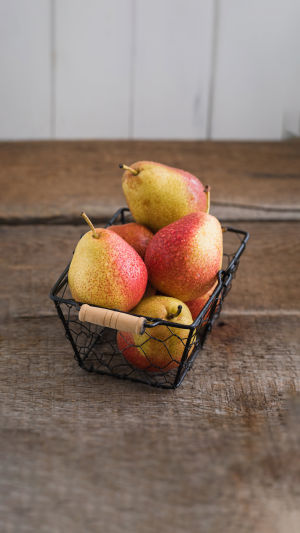Pears, as an ancient and widely cultivated fruit, boast a long history and rich cultural background.
Not only are they extensively grown and consumed around the world, but they also hold unique symbolic meanings and diverse uses across various cultures.
<h3>Origin and Spread of Pears</h3>
The origin of pears can be traced back to ancient civilizations, particularly in China and Central Asia, with a history spanning approximately 3,000 years.
China is one of the earliest countries to cultivate pears, with archaeological evidence of early pear tree cultivation found throughout the region. Over time, pears gradually spread to the Middle East, Europe, and other areas, resulting in the development of different varieties in these regions.
In the trade along the ancient Silk Road, pears were highly valued and played a significant role in cultural exchanges and commerce. As Eastern and Western cultures merged, pear cultivation techniques and varieties were disseminated and refined, leading to the diverse array of pears we have today.
<h3>Types and Characteristics of Pears</h3>
There are over 3,000 different varieties of pears worldwide, which can be broadly categorized into two types: Asian pears and European pears. Asian pears are usually round or oval, with tender flesh, juicy texture, and a sweet taste. Representative varieties include China’s snow pear and Japan’s 20th-century pear. European pears, on the other hand, are typically elongated, with delicate flesh and a soft, buttery texture. Common varieties include France’s Bartlett pear and Italy’s Abate Fetel pear.
Each variety of pear has distinct characteristics in terms of appearance, taste, and use. For example, China's snow pear has thin skin and is highly juicy, making it ideal for fresh consumption and juicing.
In contrast, France’s Bartlett pear, with its rich aroma and sweet taste, is often used in desserts and jams. Besides their delightful flavours, pears are nutritionally rich, containing ample vitamin C, dietary fibre, and antioxidants, all of which offer numerous health benefits.
<h3>Planting and Maintenance of Pears</h3>
Pear tree cultivation requires specific climatic conditions and soil environments. Pear trees thrive in warm, humid climates, ideally in regions with an average annual temperature of 10-15 degrees Celsius. They prefer fertile, well-drained sandy loam soil.
Additionally, maintaining pear trees involves vigilant pest and disease control, along with proper pruning to ensure high-quality fruit production and yield. The cultivation cycle of pear trees is relatively lengthy, typically taking 5-7 years to reach peak fruit-bearing periods. During this time, effective water and fertilizer management, along with pest and disease prevention, are crucial to enhance fruit quality and yield.
Moreover, different pear varieties have varying climate and soil requirements, necessitating that growers choose suitable varieties and cultivation techniques based on local conditions.
<h3>Cultural Significance and Applications of Pears</h3>
Pears hold rich symbolic meanings and have diverse applications. They are believed to have the effects of moistening the lungs, relieving coughs, promoting fluid production, and quenching thirst, making them a common remedy for symptoms like coughs and dryness.
In literature and art, pears often symbolize purity and beauty. Pear blossoms, with their white and pure appearance, have been used by ancient poets to represent pure love and beauty.
In modern society, the applications of pears have diversified. Beyond fresh consumption and traditional medicinal uses, pears are widely employed in food processing and beverage production. Products like pear juice and dried pears are highly favoured by consumers. Moreover, due to their high vitamin and antioxidant content, pears are also used in cosmetics and health products, contributing to beauty and immune system enhancement.
In conclusion, as an ancient yet dynamic fruit, pears maintain significant economic value and cultural importance in modern society.
Whether in agricultural production, food processing, or healthcare, pears exhibit vast developmental potential and prospects. Through ongoing technological innovation and international collaboration, the pear industry is set to achieve an even brighter future.





